66 F. high in the Twin Cities Monday (shortly after midnight).
43 mph. Peak hourly wind gust yesterday in the metro area (1:53 PM).
60 F. average high on October 12.
61 F. high on October 12, 2014.
Trace of rain fell yesterday at KMSP.
October 13, 1917:
Record low temperatures occurred across central Minnesota with
temperatures ranging from the low to mid teens to the upper teens and
lower 20s. St. Cloud had the coldest temperature of 10 degrees
Fahrenheit; likewise, Mora recorded a low of 13 degrees Fahrenheit.
October 13, 1880:
An early blizzard struck southwest and west central counties in
Minnesota. Huge drifts exceeding 20 ft in the Canby area lasted until
the next spring.
October 13, 1820: Snowstorm at Ft. Snelling dumps 11 inches.
Better Hair DayMetro Freeze Risk
on Saturday"Bad
weather always looks worse through a window" wrote Tom Lehrer. The view
out the Amish Doppler (window) looks considerably better than
yesterday.
Monday was the definition of foul, with 40-50 mph gusts and angry fits of rain. A preview of coming attractions.
People living in far western Minnesota got a rude awakening: they went from mid-90s
Sunday afternoon to sleet
on Monday;
a wind chill dipping into the 30s. It's amazing how quickly the sky can
change in a 24-hour span. From pure magic to raw and windblown in the
meteorological blink of an eye.
Welcome to the Major Leagues of Weather.
Winds ease today; enough sun for 60F. A reinforcing cool front arrives
Thursday with more ragged bands of showers. Take a heavy jacket for
Friday
evening football games, and if skies clear and winds diminish (likely)
the stage is set for the first metro frost/freeze of the season early
Saturday, coming about 10 days later than average. 60s return by early next week; more lukewarm days ahead.
At least I have something to do now. If the weather didn't change what would we talk about?
Crazy Swings.
The Twin Cities office of the National Weather Service tweeted this out
Monday morning; from mid-90s to rain mixed with sleet in under 24
hours. That'll wake you up.
40-50F Temperature Drop in 24 Hours. Yes, we all knew it was too good to last. 50 degrees in 24 hours? That's why the winds were howling yesterday. Map source:
Twin Cities National Weather Service.
Risk of Blowing Dust.
Mark Tarello tweeted this out yesterday, showing swirling clouds of
dust picked up by 50-mph wind gusts near Madelia, Minnesota. Nothing
more refreshing than drifting topsoil.
...STRONGEST WIND GUSTS DURING THE PAST 24 HOURS ...
LOCATION SPEED TIME/DATE LAT/LON
ALEXANDRIA AP 55 MPH 0742 AM 10/12 45.87N/95.39W
WILLMAR AP 54 MPH 0215 PM 10/12 45.12N/95.08W
MORRIS AP 54 MPH 0754 AM 10/12 45.57N/95.99W
APPLETON AP 51 MPH 1234 PM 10/12 45.23N/96.00W
CANBY AP 51 MPH 0714 PM 10/11 44.73N/96.27W
GLENWOOD AP 51 MPH 0354 PM 10/12 45.64N/95.32W
REDWOOD FALLS AP 51 MPH 0948 AM 10/12 44.55N/95.08W
JORDAN 6 E 49 MPH 1208 PM 10/12 44.66N/93.52W
LITCHFIELD 3 S 49 MPH 1111 AM 10/12 45.07N/94.53W
ST CLOUD AP 49 MPH 0211 PM 10/12 45.54N/94.05W
OLIVIA AP 48 MPH 0433 PM 10/12 44.78N/95.03W
NEW ULM AP 48 MPH 1033 AM 10/12 44.32N/94.50W
SAUK CENTRE AP 47 MPH 0734 AM 10/12 45.71N/94.93W
ROBBINSDALE 1 WSW 47 MPH 1227 PM 10/12 45.02N/93.35W
LONG PRAIRIE AP 46 MPH 0323 PM 10/12 45.90N/94.87W
BENSON AP 46 MPH 0134 PM 10/12 45.33N/95.66W
GRANITE LEDGE 7 N 46 MPH 0328 PM 10/12 45.90N/93.85W
PRIOR LAKE 2 WSW 46 MPH 1235 PM 10/12 44.71N/93.46W
EDEN PRAIRIE AP 46 MPH 0334 PM 10/12 44.83N/93.46W
Peak Wind Gusts Monday. The entire list from NOAA is
here.
Wild Winds.
Here is what I was staring at on my phone yesterday at 2:21 PM: a broad
area of (sustained) 40+ mh winds from the eastern Dakotas into western
Minnesota. Source: Aeris Enterprise Mobile.
Comma Cloud.
From 22,300 miles above the equator storms look like comma-shaped
swirls, counterclockwise winds wrapping into the center of low pressure.
Today should be an improvement over Monday. Then again just about
anything would be.
The Big Dip.
We knew it was inevitable, and overdue (to the tune of about 10 days).
On average the first freezing temperature at MSP International Airport
takes place October 7. A model ensemble prints out a temperature of 30F
at KMSP Saturday morning at 6 AM. Source: Aeris Enterprise Mobile.
Cold Front With Urban Heat Island.
Models shows temperatures close to freezing at KMSP Saturday morning,
assuming light winds and clear skies. The immediate downtowns may avoid a
frost/freeze, thanks to the urban heat island, but suburban areas may
not be quite so lucky. Source:
Aeris Enterprise.
Cold Front Without Urban Heat Island.
The story for Northfield (and other outlying exurbs of MSP) is a bit
different, temperatures at least 5F colder than the immediate metro
area, meaning a good chance of a hard freeze, defined as 3 hours or more
colder than 28F, cold enough to kill off most plant life (and bugs!)
Maps Look Like October.
Well it's mid-October; the maps should probably start to look like
October at some point. Winds ease today as yesterday's tightly wrapped
storm pushes east. In fact today and Wednesday look pretty nice before
the next, reinforcing cold front arrives Thursday with a few showers -
setting the stage for a widespread hard freeze late Friday night and
Saturday morning. Source: NOAA NAM model.
240-Hour Accumulated Snowfall.
NOAA's GFS model shows a little wet snow pushing across the Great Lakes
and New England; a minor slush event over the highest peaks of the
Rockies. Otherwise the USA is snow-free into next Thursday, but (stating
the obvious) the snow bands are edging ever closer. Source:
AerisWeather.
Allergies Are Becoming More Frequent. Why? Here's an excerpt of an interesting post from The Conversation and
Huffpost Healthy Living: "...
The reasons for the rising number of allergies are not fully understood, but here are six theories.
1)
Decreased exposure to infections or microbes – or both – in early life
could lead to an increased risk of allergy. This is commonly referred to
as the hygiene hypothesis, first suggested in 1989. Research showing children
who have close contact with pets or livestock and those who come from
larger families are less likely to develop allergies have indirectly
supported the hygiene hypothesis..."
This is the Fourth Year In A Row for a Below Average Tornado Count Across the USA.
For the record: Minnesota experienced 24 tornadoes, 20 in Wisconsin -
also fewer than average. Meteorologist John Belski has an interesting
blog post on another mercifully-slow year for tornadoes at
WLKY.com
in Louisville; here's his intro: "The tornado count across the U.S. is
up this year over last. In fact this is the most active year since 2011.
However, as of now the total count is still about 20% under the
average. 2015 tornadoes..... The actual confirmed tornado count is 877,
but that is only through July 31. The total through today is probably
around 930. The long term average is 1250 to 1300 tornadoes a year in
the U.S..."
Image credit:
NOAA SPC.
2015: Most Wildfire Acres Burned in USA - Year To Date.
Perpetual drought and record heat has taken a toll, and it appears that
this year has the dubious distinction of the most acres burned in the
historical record. Here's an excerpt at
tamino.wordpress.com: "...
Those
black dots are yearly totals — the red one, circled, is only the year
so far. With nearly three months to go, and October a traditionally bad
fire month for California … how much worse will it get?..."
The Storm That Ravaged French Riviera.
Could a hurricane spin up in a (warming) Mediterranean Sea?
Tropical-storm like cyclones have spun up in the past, a hybrid weather
phenomena dubbed a
Medicane. Expect the unexpected. Here's an excerpt from
Gulf Times: "...
To
set off this chain of events, the ocean’s surface temperature has to be
above 26C (79F), but in the Mediterranean the storms are slightly
different. ‘Medicanes’ have been known to develop even when the sea is
significantly cooler. This has prompted some meteorologists to question
whether the storms really are hurricanes. Hurricanes that try to develop
in the Mediterranean are also limited by space. If you compared the
size of the Mediterranean to the Atlantic or the Pacific Ocean, then
clearly it is tiny. It also has a large number of islands and peninsulas
jutting into it. This means that it is difficult for a storm to spend a
significant time over water, as would be necessary for a powerful
hurricane to develop. However, despite this, occasionally hurricane-type
systems have been spotted in the Mediterranean. They usually originate
from other ‘regular’ storms, which then begin to feed off the warm
waters of the Mediterranean and begin to take on the characteristics of a
hurricane..." (November 7, 2014 file image:
wunderground.com)
The World Economic Order Is Collapsing And This Time There Seems No Way Out.
Here's an uplifting story for a Tuesday - I hope he's wrong, but under
the heading of "covering my Doppler" here's an excerpt of an Op-Ed that
left me even more paranoid than usual at
The Guardian: "...
Yet there is a parallel collapse in the economic order that is less conspicuous: the hundreds of billions of dollars fleeing emerging economies,
from Brazil to China, don’t come with images of women and children on
capsizing boats. Nor do banks that have lent trillions that will never
be repaid post gruesome videos. However, this collapse threatens our
liberal universe as much as certain responses to the refugees. Capital
flight and bank fragility are profound dysfunctions in the way the global economy is now organised that will surface as real-world economic dislocation..."
Amazon Building a Tech Business for the Long Haul. Here's an excerpt of an interesting story at
The New York Times: "
Amazon
Web Services doesn’t just want to dominate the global business in
selling computing online. It also wants to be the rarest thing of all in
the technology industry: a long-lived company. Its strategy hinges on
an unprecedented level of automation in computer programming and
maintenance, coupled with offering new products and services at a rate
none of the old-guard companies seem able to match. The idea seems to be
to dominate not so much by the traditional “vendor lock-in” of hooking
customers on proprietary technology, but by making itself the center of
the styles and habits of cloud computing..."

Twitters Moment.
Will "Moments" on Twitter reinvent the company - is it a sustainable
business model? Here's an excerpt of an interesting post at
Stratechery by Ben Thompson: "...
What’s
most interesting, though, and most exciting, is understanding how it is
that Twitter can pull this off: the company doesn’t need stories from
publications because it has nearly all of the originators of those
stories already on its service. In other words, if the Internet broke
down newspapers to their component stories, Twitter breaks down stories
to their component moments, and those moments are chronicled not only by
normal people on the ground but by the best news-gatherers on the
planet...."

Weight Gain Possibly Tied to Later Bedtimes. I'm going to bed right after a 6-course dinner. Here's an excerpt from
The New York Times: "
There
may be a link between later bedtimes and weight gain, new research
suggests. Researchers studied 3,342 adolescents starting in 1996,
following them through 2009. At three points over the years, all
reported their normal bedtimes, as well as information on fast food
consumption, exercise and television time. The scientists calculated
body mass index at each interview..."
Image credit: Stuart Bradford.
Here's How Much a Zombie Apocalypse Survival Kit Costs. Someone at CDC has a good sense of humor.
Money.com has the details; don't say you weren't warned: "...
In
an effort to promote awareness around disaster preparedness (natural
and otherwise), the Centers for Disease Control put together a zombie apocalypse preparation kit
that details everything you would need to have on hand in the event the
living dead showed up at your front door. The practical suggestions are
not much different from what the agency recommends in the event of a flood, earthquake, or other natural disaster. We took the CDC’s recommendations and a few others from ‘zombie expert’ Max Brooks, author of The Zombie Survival Guide, to price out a fairly simple emergency kit that would have you covered for almost any crisis situation..."

TODAY: Mix of clouds and sun, less wind. Winds: NW 10-15. High: near 60
TUESDAY NIGHT: Mostly clear and cool. Low: 43
WEDNESDAY: Plenty of sun, breezy. Winds: NW 10-20. High: 65
THURSDAY: Blustery & showery again. Winds: NW 15-25. Wake-up: 51. High: 57 (falling)
FRIDAY: Lingering clouds, brisk. Wake-up: 42. High: 50
SATURDAY: Early freeze. Bright sun. Wake-up: 32 (colder in the outlying suburbs). Winds: SE 3-8. High: 52
SUNDAY: Dim sun, a milder wind. Winds: S 10-20. Wake-up: 37. High: near 60
MONDAY: Partly sunny, lukewarm again. Wake-up: 49. High: 66
Climate Stories...
The Most Pessimistic Climate Change Scientist Has Had a Sudden Change of Heart. Will technological innovation and renewables trending cheaper than fossil fuels save the day? Here's an excerpt from
The Independent: "...
His
optimism is founded on the breakneck speed of innovation in wind and
solar power in the past two to three years, which means that renewable
energy is being deployed on a massive scale and, crucially, at a cost
roughly comparable to fossil fuels. Only last week new figures showed
that the cost of electricity produced by onshore windfarms in the UK has
fallen so much that for the first time it is now cheaper than
fossil-fuel energy..."
Choose Science, Stewardship in Understanding Climate Change. My friend, Chief Meteorologist Greg Fishel at WRAL-TV in Raleigh, North Carolina wrote an
article explaining the evolution of his views on climate science; here's an excerpt: "...
In
closing, I believe science is a gift from God. We benefit from science
in our daily lives 1,000 times over through all the conveniences we
enjoy. Why have we chosen to turn our back on science when it comes to
basic chemistry and physics? It is time to stop listening to the
disingenuous cherry-pickers and start taking responsibility for learning
the truth about climate change. For those of you who are ardent
skeptics, it's going to be uncomfortable. I know, I have gone through
the entire process. But in my mind, I didn't make a mistake, I simply
grew as a human being. There aren't too many experiences in life that
can top that."
September 2015 Continues Upward Trend in Global Temperatures. Here's an excerpt of a post from Greg Laden at
scienceblogs.com: "
The
NASA GISS global surface measurement for September is out. I don’t know
off hand if there are corrections for earlier months. The data for
September show the month as the same as the earlier month, 0.81 degrees C
anomaly. The current best estimate of the warming of the Earth’s
surface from anthropogenic global warming, using the NASA data and a 12
month running mean, looks like this..."
25 Million Americans Could Lose Their Homes to Global Warming. Will You?
An alarmist headline? Perhaps, but the rate of sea level rise is
alarming, and both Greenland and Antarctica are wild cards. Feeling
lucky? Here's an excerpt from
Christian Science Monitor: "
Millions
of Americans could lose their homes if planet-warming emissions
continue unabated through 2100, pushing global sea levels up by more
than 14 feet, researchers said. In the United States, between 20 and 31
million people are living on land that would be submerged by rising
oceans without aggressive cuts to greenhouse gas emissions, according to
a study published on Monday in the Proceedings of the National Academy
of Sciences..."
Photo credit above: "
This aerial
photo shows the island village of Kivalina, an Alaska Native community
of 400 people already receding into the ocean as a result of rising sea
levels, Sept. 2, 2015, in Kotzebue, Alaska.
" Andrew Harnik/AP/File.
Another Marker.
Warming water expands - nothing controversial about that statement.
Water can't expand downward so it rises, impacting sea level rise. This
is a fairly big deal, considering 40% of the American population lives
in a highly populated coastal area, and 8 of the world's 10 largest
cities are near coastline. Graphic and facts courtesy of
The Climate Reality Project.
Carbon Emissions from U.S. Power Plants Hit 27-Year Low. The ship is pointed in the right direction, it seems. Here's an excerpt from
Climate Central: "
As
states begin the long task of reducing greenhouse gas emissions from
electric power plants to comply with new federal climate policy, a
27-year low in carbon dioxide emissions earlier this year shows the U.S.
may be heading toward meeting its emissions goals. U.S. power plants
emitted less carbon dioxide — 128 million metric tons — in April than at
any point in since April 1988, according to new U.S. Energy Information Administration data..." (Image credit:
EIA).
3F Ocean Water Temperature Rise since 1901.
Climate Central has details: "
This
year is on track to be the hottest on record globally. The strong El
Niño is likely playing a role as the average global temperature of an El
Niño year is 0.4°F higher than a La Niña year. However, the strong El
Niño is not solely responsible for the warming planet. Global
temperatures have been trending upward since 1950, regardless of whether
or not the Pacific Ocean was in an El Niño, La Niña, or neutral phase.
In fact, La Niña years in the 21st Century are now warmer than El Niño
years just 30 years ago. Similarly, the long term trend of global ocean
water temperatures is on the increase, emphasizing that El Niño is only
magnifying the ongoing warming trend..."
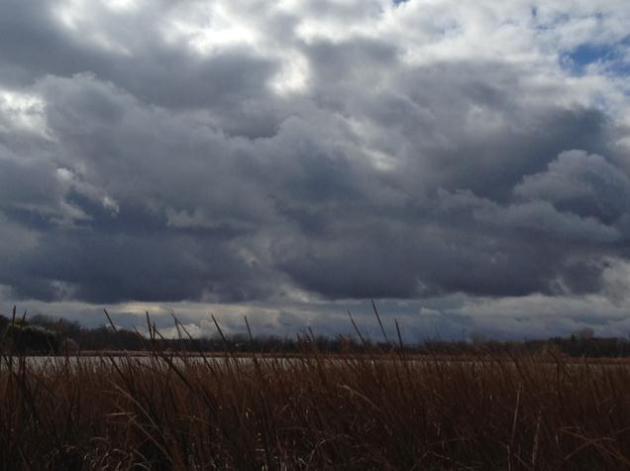
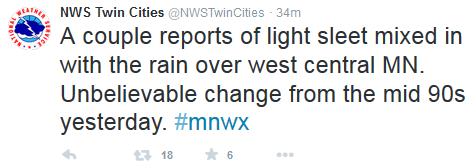
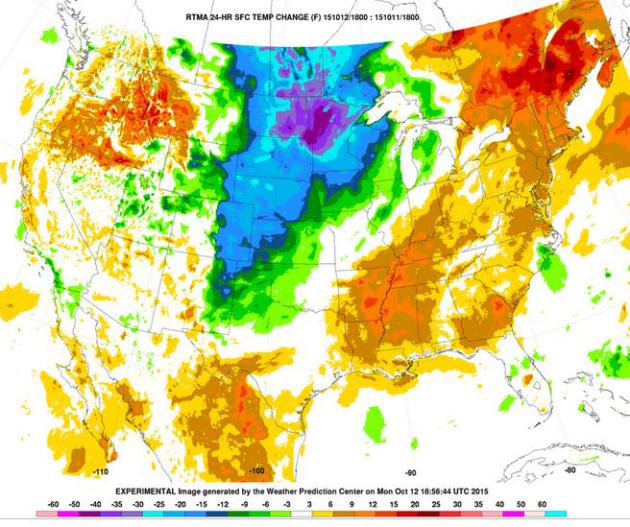
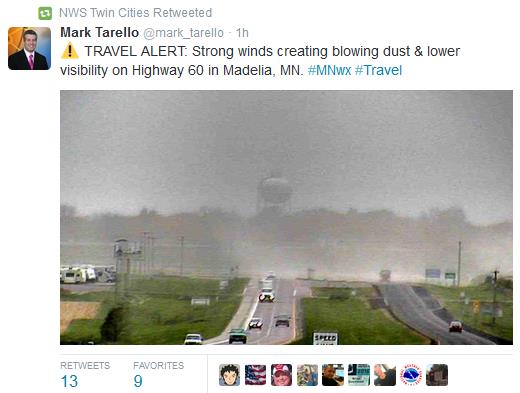
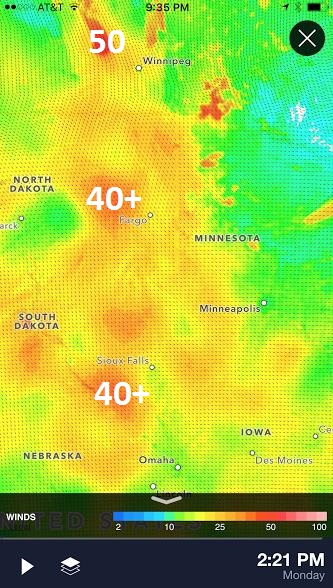
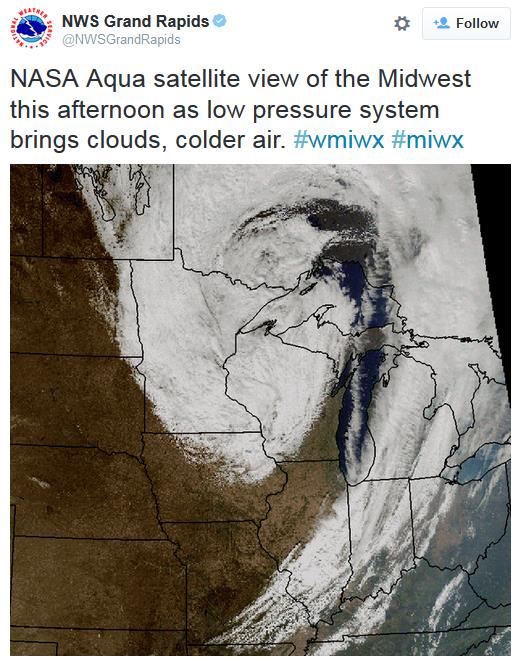
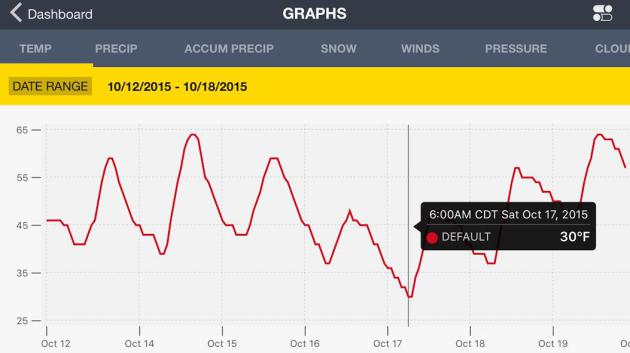

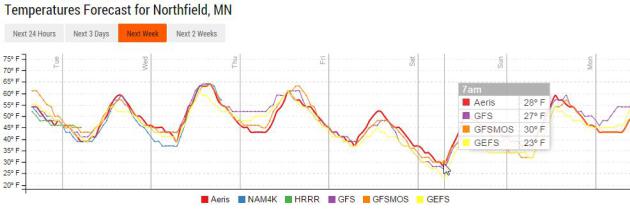
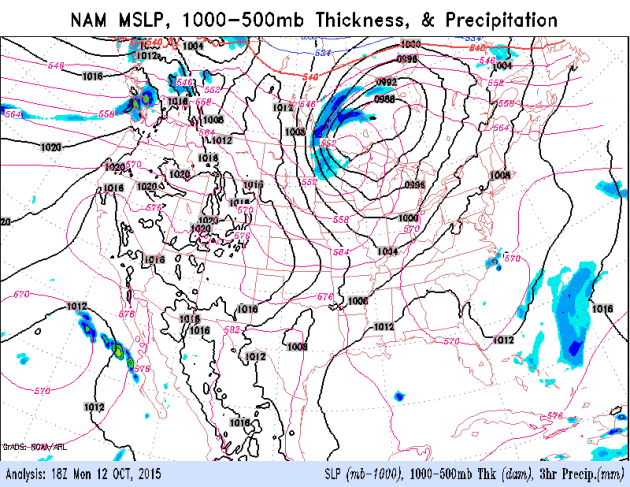
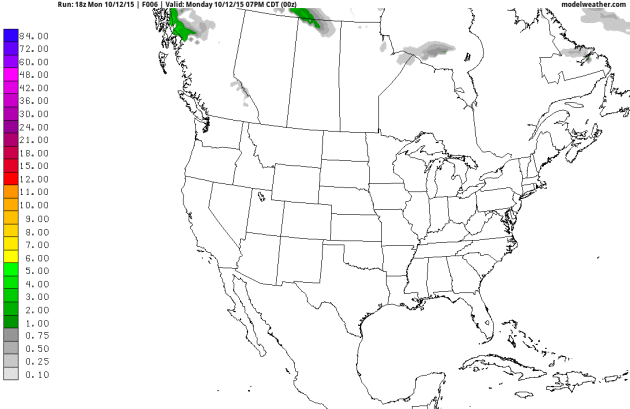

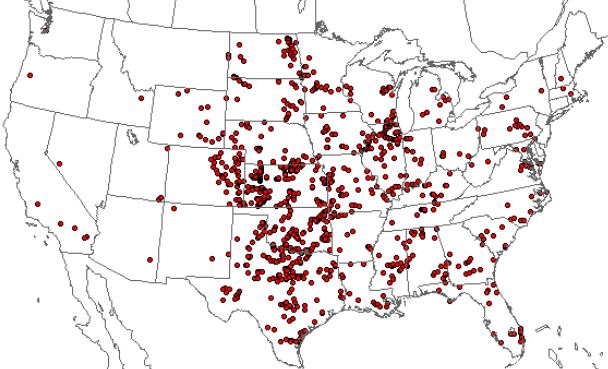
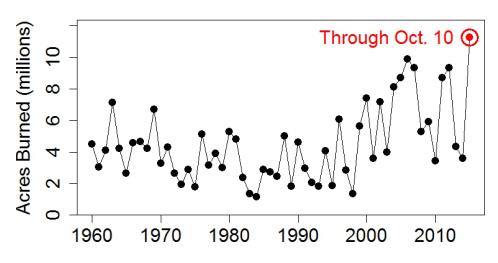
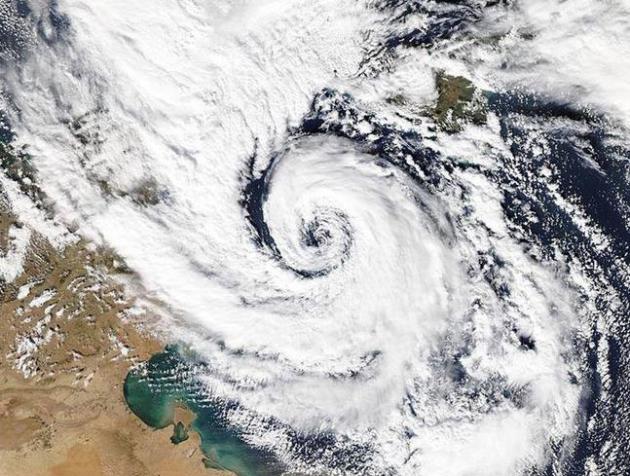




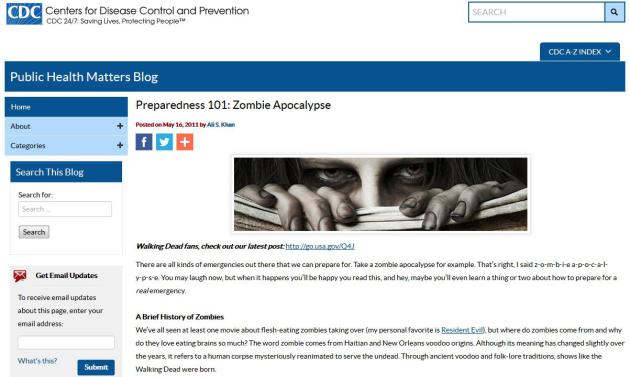



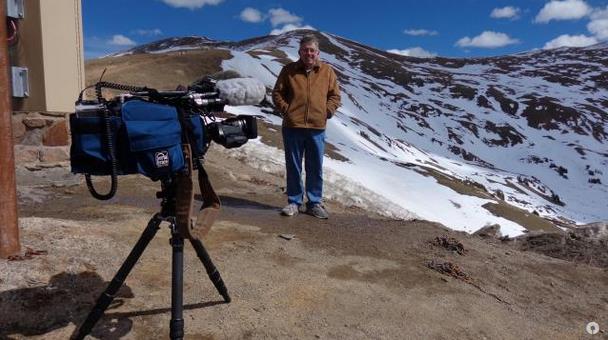
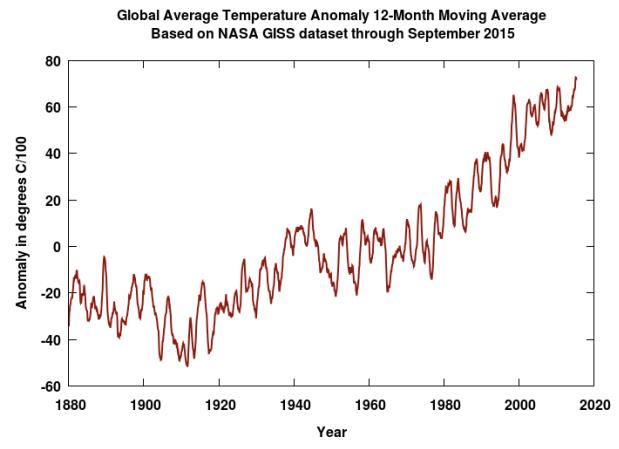
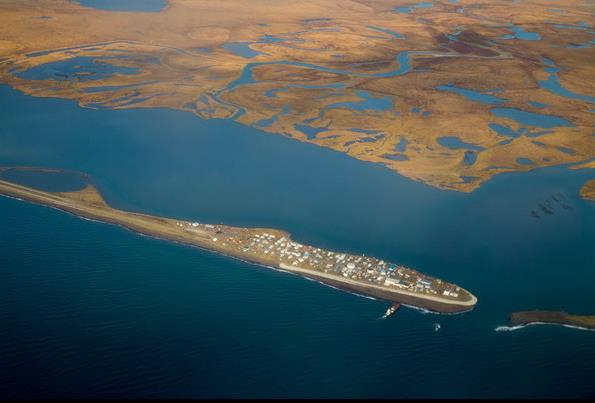
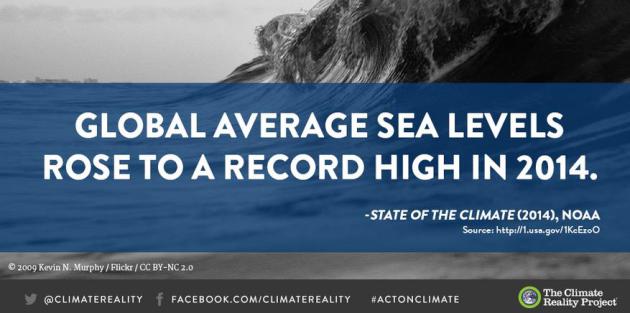
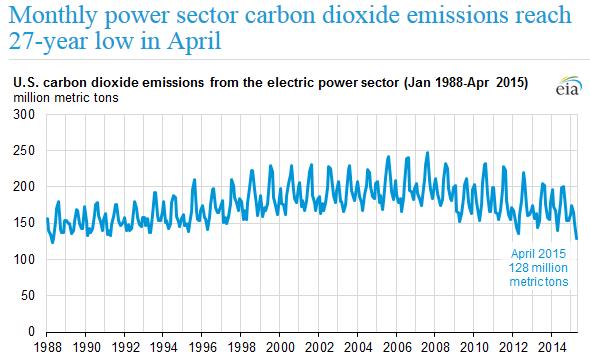
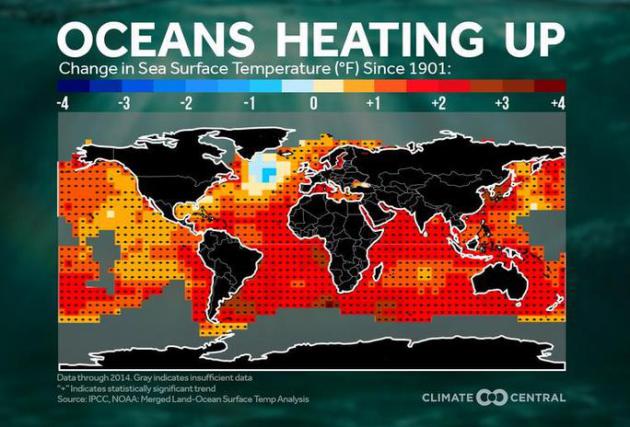
No comments:
Post a Comment